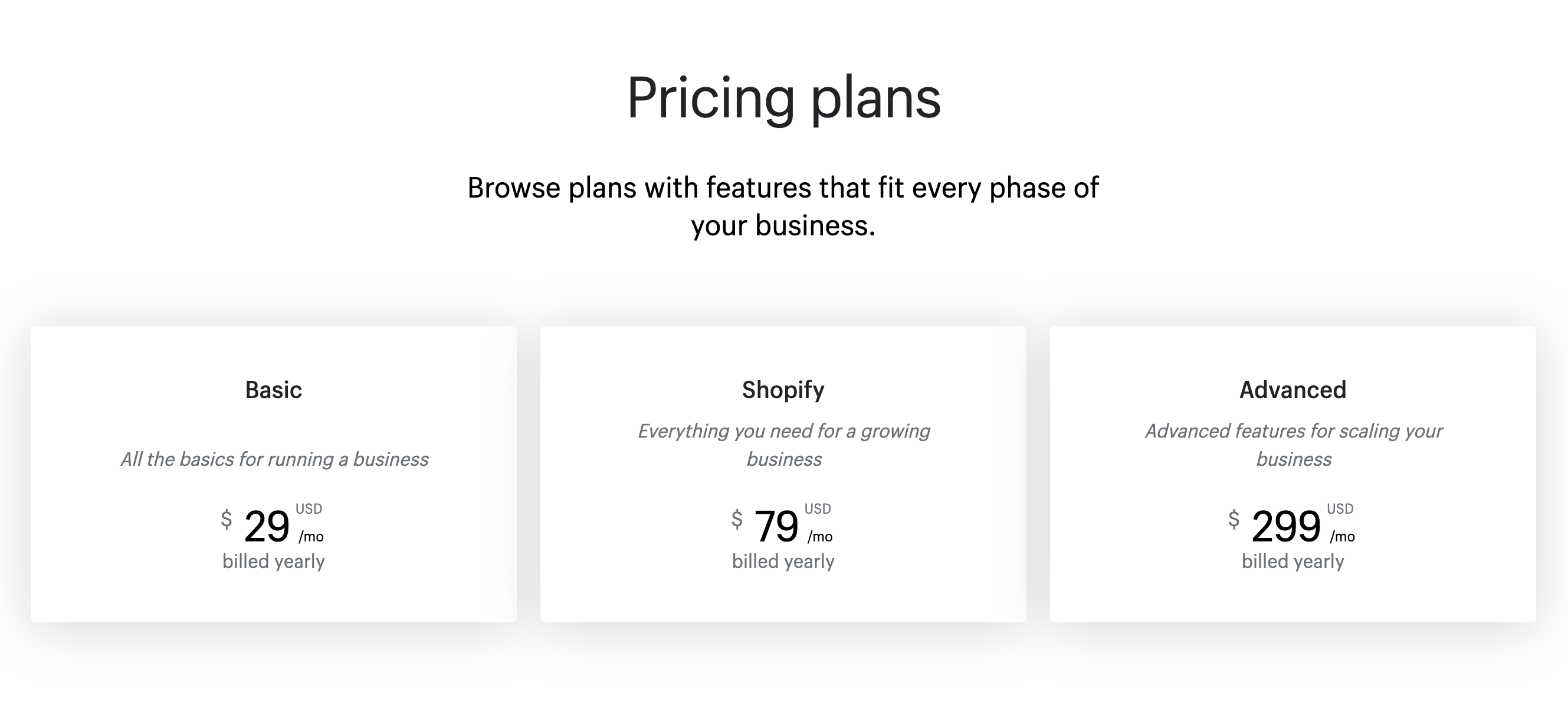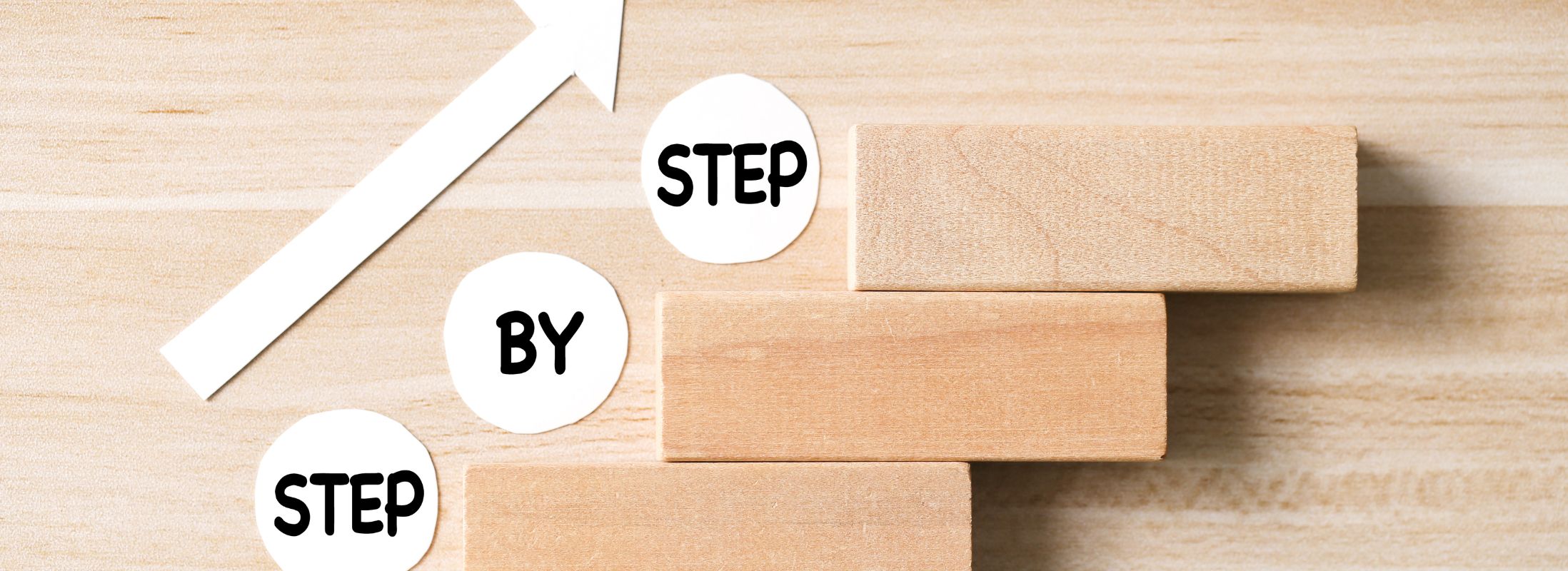Are you running an online store using WooCommerce but struggling with its complexity and limitations? Do you want to switch to a more user-friendly and scalable platform that offers better customization options and security features?
If your answer is yes, then it’s time to migrate to Shopify, the most popular e-commerce platform in the world. In this blog post, we will guide you through a roadmap to successfully migrate from WooCommerce to Shopify.
We’ll cover everything you need to know, from why migrating to Shopify is beneficial, to what to consider before migrating, to choosing the right Shopify plan, and finally, optimizing your new Shopify store for success. So, let’s dive in and make your migration process a breeze.
Why Migrate from WooCommerce to Shopify
If you’re considering whether you should migrate from WooCommerce to Shopify, it’s important to understand the advantages of making the switch. Here are some reasons why you may want to consider migrating to Shopify:
- User-Friendly Interface: One of the main reasons to consider Shopify is its user-friendly interface. Compared to WooCommerce, Shopify has a more straightforward and intuitive dashboard that makes it easier for even non-tech-savvy users to customize their website, add new products, and manage orders.
- Better Scalability: As your business grows, you may find that WooCommerce isn’t able to keep up with your needs. In comparison, Shopify is designed to be scalable and can handle a larger volume of products and traffic, making it a better choice for businesses that plan to grow in the future.
- Extensive App Store: Shopify has an extensive app store with more than 8,000 apps. In comparison, WooCommerce offers over 6,000 plugins. These apps can help you add new features to your website, such as social media integration, email marketing, and product reviews. This can help you optimize your store and provide a better customer experience.
- Better Security: Shopify provides automatic backups, which means you don’t have to worry about losing your data if something goes wrong. On the other hand, WooCommerce users need to set up their own backups. Additionally, Shopify has a robust security system that helps to protect your store from hackers and other threats.
- Third-Party Integrations: Shopify has a wide range of third-party integrations, which can help you connect with other tools and services you’re already using. Compared to WooCommerce, Shopify’s integrations can save you time and make it easier to manage your online store.
With these advantages in mind, it’s easy to see why Shopify may be a better fit for some businesses. If you’re considering migrating to Shopify, it’s important to take the time to evaluate your current platform and determine if Shopify is the right choice for you.
What to Consider Before Migrating
Before migrating from WooCommerce to Shopify, there are several factors to consider. The complexity of your current store, the size of your product catalog, and any customizations or third-party integrations you have in place are important factors to consider.
Theme and Plugin Compatibility
When migrating from WooCommerce to Shopify, you need to consider the compatibility of your themes and plugins. Unfortunately, WooCommerce themes and plugins cannot be re-applied to Shopify. However, there are solutions to handle this.
In terms of design, you can either select a new Shopify theme or create a custom one that looks similar to your old WooCommerce theme.
To replace WooCommerce plugins, you can use Shopify apps with similar features. You may find that some apps require customization to fit your needs, so be sure to review them carefully before making a selection.
Payment and Shipping

Payment and shipping options are critical considerations before switching to Shopify. Shopify offers different payment options, including Shopify Payments, which is their own payment gateway. WooCommerce offers similar payment gateways, but some payment providers may not be available on Shopify. Additionally, shipping carriers and their rates may differ between the two platforms.
To make an informed decision, you should review Shopify’s payment and shipping options and compare them to WooCommerce’s. You should also consider if there are any specific payment or shipping providers that you need for your business and if they are available on Shopify.
Hosting
Hosting is another crucial aspect to consider before migrating to Shopify. Shopify provides hosting solutions, while WooCommerce requires users to find their own hosting. Shopify’s hosting options provide a more streamlined and integrated solution for your online store.
To decide if Shopify’s hosting is right for you, you should compare its hosting plans and features to your current hosting solution. You should also consider if you need a more robust hosting solution to accommodate your business’s growth.
Choose the Right Shopify Plan
Shopify offers several plans to fit businesses of different sizes and needs. It’s important to carefully assess your business requirements and choose the plan that will best serve your needs.

The first plan is Basic, which includes all the essential features of Shopify, such as hosting, SSL certificate, unlimited products, and two staff accounts. This plan costs $29 per month, making it a great option for small businesses or those just starting out.
The second plan is Shopify, which includes all the features of Basic Shopify plus additional features like gift cards, professional reports, and five staff accounts. This plan costs $79 per month and is a good fit for growing businesses with more staff and sales.
The third plan is Advanced, which includes all the features of Shopify, as well as advanced report building and third-party app integrations, up to 15 staff accounts, and more. At $299 per month, it’s a good option for larger businesses with more complex requirements.
The fourth plan is Shopify Plus, which is designed for high-volume merchants and enterprise-level businesses. It includes all the features of Advanced Shopify, plus advanced APIs, priority support, and more. The pricing for this plan is custom and tailored to each business, so you’ll need to contact Shopify to discuss your specific needs.
When deciding on the right Shopify plan for your business, it’s essential to consider factors such as the size of your business, your product catalog, your staff size, and your budget. You should also consider any potential growth you anticipate in the future and choose a plan that can accommodate that growth.
By selecting the right Shopify plan, you can ensure that your new Shopify store is fully functional and equipped to handle your business needs. This will help you achieve success with your new platform and streamline your operations, making it easier for you to focus on growing your business.
Pre-Migration Preparation
Once you have decided to migrate to Shopify, it’s fundamental to prepare for the migration process. The following checklist can help you ensure a smooth transition:
- Back up your data: Before you start the migration process, make sure to back up your data from your WooCommerce store. This will ensure that you don’t lose any crucial data during the migration process.
- Research Shopify themes: Look for Shopify themes that will suit your store’s design and functionality needs. You can either choose a pre-made theme or create a custom theme for Shopify that looks similar to your old WooCommerce theme.
- Re-evaluate your third-party integrations: Consider the third-party integrations you have in place on your WooCommerce store, and determine if they are necessary for your new Shopify store. If they are, make sure to research the Shopify apps that can replace these integrations.
- Audit your product catalog: Review your product catalog and ensure that it is ready for migration to Shopify. This includes checking that your product descriptions, images, and pricing are up-to-date and that all products are categorized correctly.
- Prepare for payment and shipping setup: Shopify offers several payment and shipping options, so you will need to review these options and determine which ones are suitable for your business. This may include setting up new payment and shipping providers or configuring existing ones.
- Plan for downtime: Migrating to Shopify may cause some downtime for your store. It’s necessary to plan for this by notifying your customers in advance and setting up a maintenance page to inform them of the migration process.
- Prepare your team: If you have a team working on your WooCommerce store, make sure they are aware of the migration process and are trained on how to use Shopify. This will help ensure a smooth transition and minimize any disruptions.
3 Ways to Migrate Your Store from WooCommerce to Shopify
Once you have completed the pre-migration preparation, it’s time to start the migration process. There are several ways to migrate your store from WooCommerce to Shopify, including using an app, hiring a developer, or doing it yourself.
1. Using an app
Using a WooCommerce to Shopify migration plugin or app is the easiest way to transfer your data. There are several apps available on the Shopify app store, which help automate the migration process and ensure that your data is transferred seamlessly. Plus, they often offer support and assistance to help you through the migration process.
2. Hiring a developer
If you have a larger store or need more complex customizations, it may be best to hire a developer. A developer can ensure that the migration process is done correctly and that your store is fully functional after the migration. Tigren is one of the most reliable providers of WooCommerce to Shopify migration services with over 10 years of experience in helping businesses make the switch. Our team of experts will work with you to ensure a smooth transition and provide ongoing support after the migration is complete.
3. Doing it yourself
For those who have a smaller store and technical skills, you can do the migration yourself. Shopify provides detailed documentation on moving from WooCommerce to Shopify. However, keep in mind that this option requires technical skills and can be time-consuming. It’s vital to carefully follow the instructions and test your new store thoroughly before launching it.
6 Key steps to take when migrating your store to Shopify

1. Export your data from WooCommerce
Before you start the migration process, you need to export your data from your WooCommerce store. You can export your products, orders, customers, and other data using a plugin or a CSV file. Once you have exported your data, make sure to review it and ensure that it is complete and accurate.
Related Posts:
3 Approaches To Migrate Orders From WooCommerce To Shopify
Migrate Products from WooCommerce to Shopify: Shifting Gears
2. Set up your Shopify store
Once you have exported your data, it’s time to set up your Shopify store. You can choose a Shopify theme that suits your needs, customize it to match your brand, and set up your payment and shipping options. Shopify provides detailed documentation on how to set up your store, so make sure to follow the instructions carefully.
3. Import your data to Shopify
Once your Shopify store is set up, you can import your data from WooCommerce using an app or a CSV file. Shopify provides several migration apps that can help you transfer your data seamlessly. If you are using a CSV file, make sure to map your fields correctly to ensure that your data is imported correctly.
4. Post-Migration Checklist
After migrating your WooCommerce store to Shopify, you’ll need to go through a post-migration checklist to ensure that everything is working as expected. Here are some tasks you should complete:
- Test your store’s functionality: It’s essential to test your store’s functionality to ensure that everything is working as expected. Check your product pages, shopping cart, checkout process, and payment gateway to ensure that they are all functioning correctly. Conducting a thorough test of your store’s functionality can help you identify and address any issues that may have arisen during the migration process.
- Update your domain: If you’ve changed your domain name as part of the migration, you’ll need to update your DNS records and redirect traffic from your old domain to your new one. You can do this by setting up a 301 redirect from your old domain to your new domain, which ensures that all traffic to your old domain is automatically redirected to your new domain.
- Check your order history: It’s crucial to ensure that all of your orders have been migrated over to Shopify and that they are accurate. Shopify’s migration apps automatically migrate your order history, but it’s still important to double-check to ensure that everything is correct. Make sure to review all your orders and ensure that they are complete and accurate.
- Update your email notifications: You’ll need to update any email notifications you have set up on your WooCommerce store to ensure that they are pointing to your new Shopify store. Shopify provides several email notifications, including order confirmation emails, shipping confirmation emails, and delivery confirmation emails, among others. Make sure to update all of your email notifications and test them to ensure that they are working correctly.
5. Optimize Your New Shopify Store
Once your migration is complete, you’ll want to optimize your new Shopify store to ensure that it’s successful. Here are some ways to do that:
- Improve site speed: Your site’s speed is crucial for providing a positive user experience and improving your search engine optimization (SEO) ranking. Use tools like Google PageSpeed Insights or GTmetrix to analyze your site speed and identify areas for improvement. You can optimize your images, minimize HTTP requests, and use a content delivery network (CDN) to speed up your site.
- Optimize for SEO: SEO is a vital part of driving traffic to your store. Ensure that your product pages have descriptive titles and meta descriptions, and include relevant keywords throughout your site. Shopify’s built-in SEO tools, such as the ability to customize your URL structure and edit your robots.txt file, can help you optimize your site for search engines.
- Set up Google Analytics: To track your site’s traffic and user behavior, set up Google Analytics on your new store. This will provide you with valuable insights into how users interact with your site and where they come from. You can use this data to improve your marketing strategies and enhance your site’s performance.
6. Launch Your New Store
After all the hard work you’ve put into migrating your store from WooCommerce to Shopify, it’s time to launch your new store. This is the final step in the process, but it’s also one of the most important. Here are the steps you need to follow to launch your new store:
- Make your store live: Once you’re satisfied with your new store’s functionality, make it live. You can do this by updating your domain’s DNS records to point to your new Shopify store.
- Announce the launch to your customers: Let your customers know that you’ve migrated to Shopify and that you have a new online store. This can be done through email newsletters, social media posts, or blog updates.
- Promote your new store on social media: Take advantage of social media platforms like Facebook, Twitter, Instagram, and Pinterest to promote your new store. You can also run ads to reach a wider audience.
Frequently Asked Questions
How long does it take to migrate from WooCommerce to Shopify?
How long it takes to transfer WooCommerce to Shopify depends on the complexity of your store. A small store with a simple product catalog can be migrated in a few hours, while a large store with a complex product catalog and customizations can take several weeks.
Can I migrate my customer data from WooCommerce to Shopify?
You can migrate your customer data from WooCommerce to Shopify. This includes customer names, email addresses, billing and shipping addresses, and order history.
Will my WooCommerce themes and plugins work on Shopify?
WooCommerce themes and plugins cannot be re-applied to Shopify. However, you can choose a new Shopify theme or create a custom theme that looks similar to your old WooCommerce theme. Additionally, you can use Shopify apps to replace any WooCommerce plugins with similar features.
Can I migrate my order history from WooCommerce to Shopify?
You can migrate your order history from WooCommerce to Shopify. This includes order numbers, customer names, product details, and order totals.
Do I need to be technical to migrate from WooCommerce to Shopify?
You don’t need to be technical to migrate from WooCommerce to Shopify. There are many tools and resources available to help you with the migration process. However, if you have a complex store with customizations and third-party integrations, you may need to hire a developer to assist with the migration.
Will I lose my SEO rankings when I migrate from WooCommerce to Shopify?
You won’t lose your SEO rankings when you migrate from WooCommerce to Shopify. However, you need to take some steps to ensure that your SEO rankings are maintained. This includes setting up 301 redirects from your old URLs to your new URLs, optimizing your meta tags and descriptions, and submitting your sitemap to Google.
What should I do if I encounter issues during the migration process?
If you encounter any issues during the migration process, reach out to Shopify’s support team for assistance. Additionally, if you are working with a developer or using a migration app, they should be able to provide support and help resolve any issues.
Final Words
Migrating from WooCommerce to Shopify can be a great move for businesses that want to simplify their store management, improve scalability, and provide a better user experience for their customers. Before deciding to migrate, businesses need to consider the complexity of their current store, the size of their product catalog, and any customizations or third-party integrations they have in place.
Once they have made the decision to migrate, businesses need to carefully choose the right Shopify plan and prepare their store for migration. During the migration process, businesses can use apps, hire a developer, or do it themselves. Regardless of the method chosen, it’s important to perform post-migration checks and fixes to ensure that the new Shopify store is fully functional.
After the migration is complete, businesses can optimize their new Shopify store for success by improving site speed and SEO. Finally, launching the new store requires careful planning and promotion on social media to ensure a successful transition.
By following the roadmap to success provided in this guide, businesses can successfully migrate from WooCommerce to Shopify and enjoy the benefits of a more user-friendly and scalable platform.

